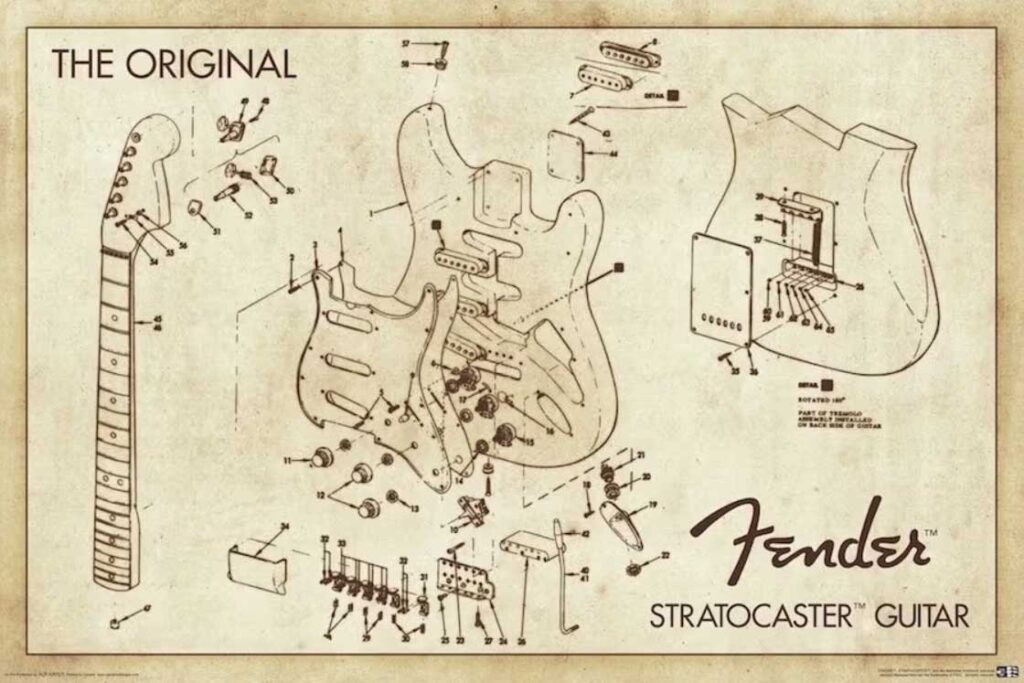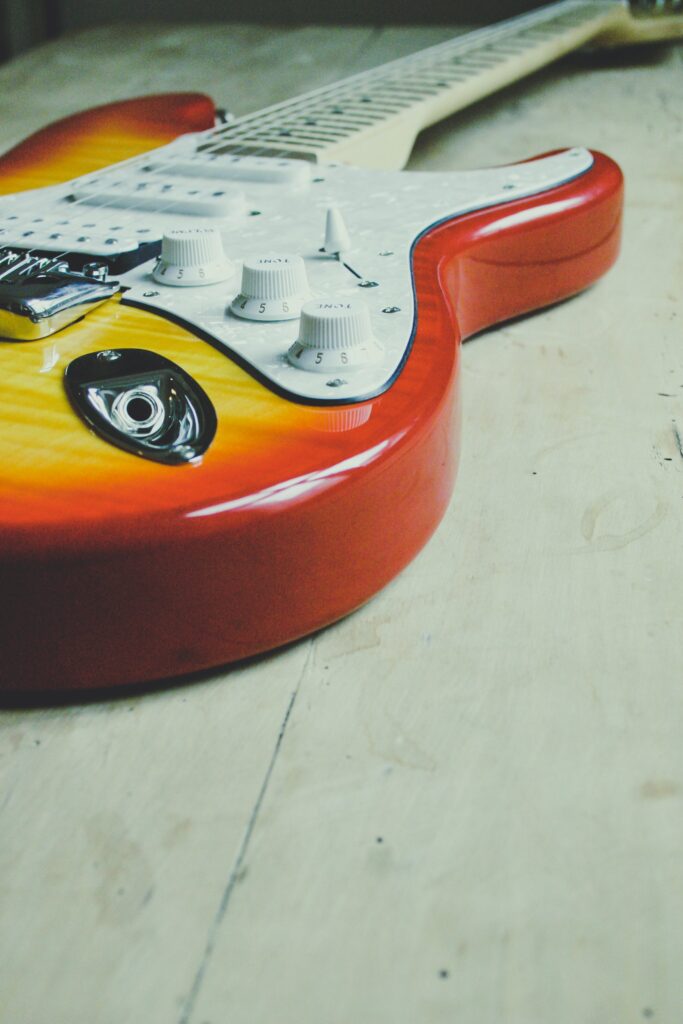In the realm of electric guitars, few names command as much respect and admiration as Fender. From humble beginnings in a small repair shop to becoming a global icon in the music industry, the history of Fender guitars is a fascinating tale of innovation, success, and occasional challenges. Let’s delve into the timeline of Fender’s journey, exploring the key milestones, innovations, and transformations that have shaped this legendary brand.

Origins and Early Innovations (1909 – 1959)
- Clarence Leonidas Fender’s Genesis: The story of Fender guitars begins on August 10th, 1909, with the birth of Clarence Leonidas Fender in Anaheim, California.
- The Birth of Fender Electric Instruments Company: In 1946, Leo Fender officially established the Fender Electric Instruments Company, marking the beginning of a new era in musical instrument manufacturing.
- The Telecaster and Precision Bass Era: The 1950s witnessed the introduction of iconic instruments like the Telecaster and Precision Bass, revolutionizing the music scene with their innovative designs and unparalleled sound.
- The Stratocaster Revolution: 1954 saw the birth of the legendary Stratocaster, a guitar that would define generations of music and establish Fender as an industry leader.

Transition and Challenges (1960 – 1985)
- Corporate Acquisition by CBS: In 1965, Fender underwent a significant change as it was acquired by CBS for $13 million, marking the beginning of a new chapter filled with both opportunities and challenges.
- Quality Concerns under CBS: Despite initial success, the CBS era brought forth concerns regarding declining quality, as corporate decisions often prioritized mass production over craftsmanship.
- The Birth of G&L Guitars: In 1980, Leo Fender partnered with George Fullerton to establish G&L Guitars, signaling a new direction for the industry legend to pursue his passion for innovation and quality craftsmanship.
- Return to Independence: By 1985, Fender regained its independence through a management buyout led by William Schultz, heralding a period of revitalization and renewed focus on excellence.

Renaissance and Expansion (1987 – Present)
- The Custom Shop Era: In 1987, Fender opened its custom shop in Corona, California, reaffirming its commitment to craftsmanship and catering to the needs of discerning musicians.
- Global Presence and Innovation: With headquarters in Arizona and facilities worldwide, including the U.S., Mexico, Japan, and Europe, Fender continues to expand its global footprint while pushing the boundaries of guitar design and technology.
- Honoring Legacy and Innovation: Through initiatives like the Fender Hall of Fame and artist signature series, Fender pays homage to its rich heritage while embracing innovation and collaboration with iconic musicians.
- Guild Acquisition and Beyond: Fender’s acquisition of Guild Guitar Company in 1995 and subsequent milestones underscore its enduring legacy and commitment to shaping the future of music.
Conclusion: A Legacy of Innovation and Inspiration
As we reflect on the remarkable journey of Fender guitars, it’s evident that the brand’s impact transcends mere instruments; it represents a legacy of innovation, craftsmanship, and passion for music. From the pioneering spirit of Leo Fender to the global phenomenon it is today, Fender continues to inspire generations of musicians worldwide, ensuring that its timeless creations resonate for years to come.


